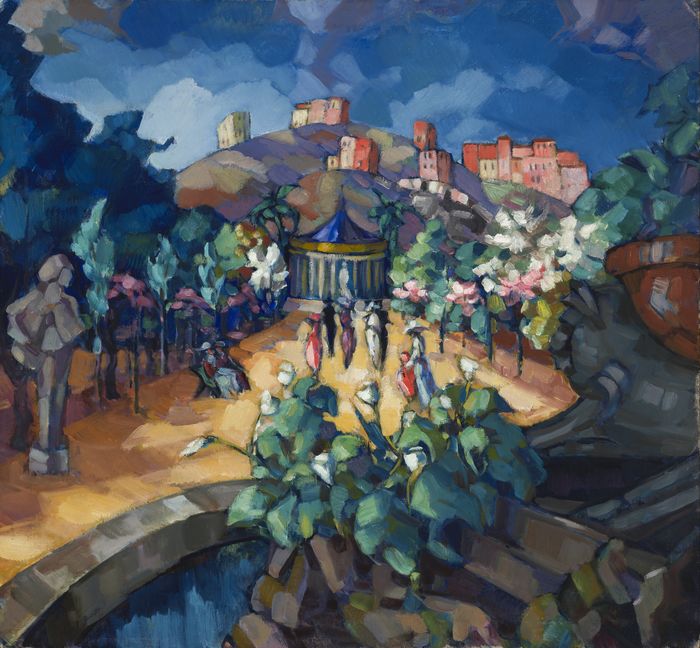The exhibition of Estonian expressionist painter Konrad Mägi (1878-1925), which recently opened in Turin, Italy, has been praised in several Italian media outlets.
The largest ever Mägi exhibition in Italy, opened by the Estonian president, Kersti Kaljulaid, on 30 November, has already attracted thousands of visitors and been praised in several Italian media outlets, the Tallinn-based Art Museum of Estonia announced in a press release.
“In the first six days, the exhibition was visited by nearly two thousand people and this number keeps growing,” the museum said. “The Italian media has paid a lot of attention to Konrad Mägi’s exhibition and his oeuvre in general; the display has been discussed and praised in several Italian newspapers and other publications, such as La Stampa, the Corriere della Sera and the Immoderati, which have introduced Mägi as a great artist to the Italian audience. A total of twelve articles have been published in connection with the exhibition so far.”
“In an article entitled ‘La luce del Nord’ (‘The Light of the North’), published in Il Torinese, the Italian art critic Gianni Milani, for example, describes the unique colour scheme and the dialogue of different landscape formations in Mägi’s works and mentions Mägi as an outstanding predecessor of Estonian modernist painting, which Milani believes is apparent in the expressiveness, anarchy and magical uniqueness of his paintings,” the art museum highlighted.
The collaborative exhibition of the Art Museum of Estonia and the Turin-based Musei Reali takes place exactly a hundred years after Mägi’s trip to Italy. The display of more than fifty paintings, portraits and sketches is one of the largest solo exhibitions of Mägi’s oeuvre in Europe.

One of the most important painters in the Estonian art history
Mägi is considered one of the most important painters in the Estonian art history. Although his creative career lasted only 20 years, he had a significant impact on the art scene of his time and on subsequent developments. Primarily known for his landscape paintings, he was one of the most colour-sensitive Estonian painters of the first decades of the 20th century. Mägi’s works on motifs of the Saaremaa island were also the first modern Estonian nature paintings.
Born in Rõngu Parish, southern Estonia, Mägi received his elementary art education from the drawing courses of the German Artisans’ Society of Tartu. He continued his art education as an unattached student in St Petersburg, studying under Amandus Adamson, a renowned Estonian sculptor and painter. In 1906, he spent the summer in Åland, Finland, together with his friendly circle of painters and writers. It was there that the 27-year-old Mägi started painting more seriously for the first time.

As was customary for artists of the time, Mägi also went to Paris, studying there at a free academy in 1907. After subsequent trips to Normandy (France) and Norway, he returned to Estonia in 1913 and founded the Pallas Art School in Tartu, which turned into the training ground for dozens of future artists. Mägi travelled to Europe once again in the early 1920ies, but his premature death in 1925 sadly ended his intensive, productive and varied career as an artist.
The exhibition “Konrad Mägi. La Luce del Nord” (“Konrad Mägi: Light of the North”) will remain open in Chiablese Hall of the Musei Reali di Torino until 8 March 2020.
Cover: Konrad Mägi – “Venice” (1922-1923). The images courtesy of the Art Museum of Estonia.

